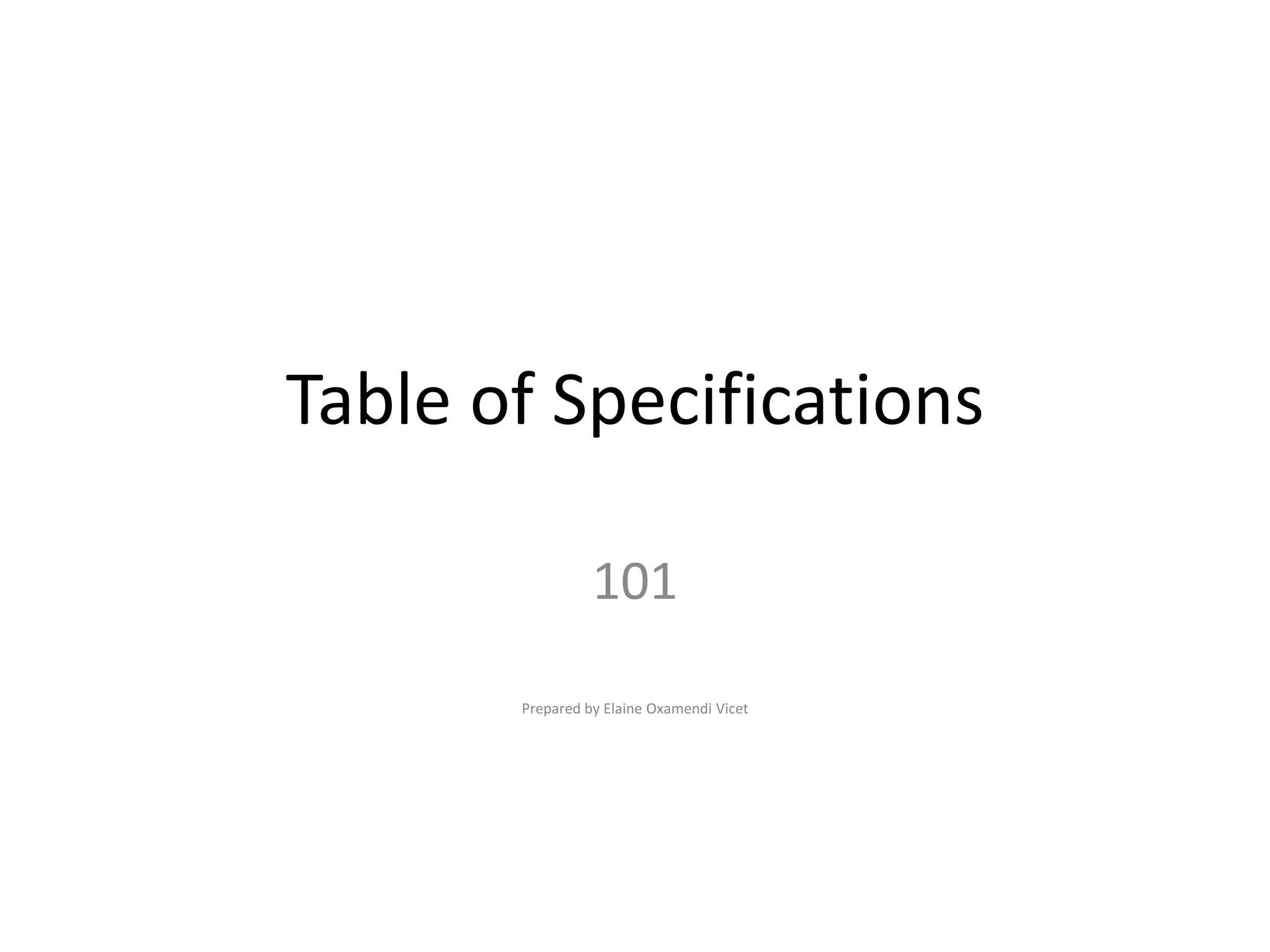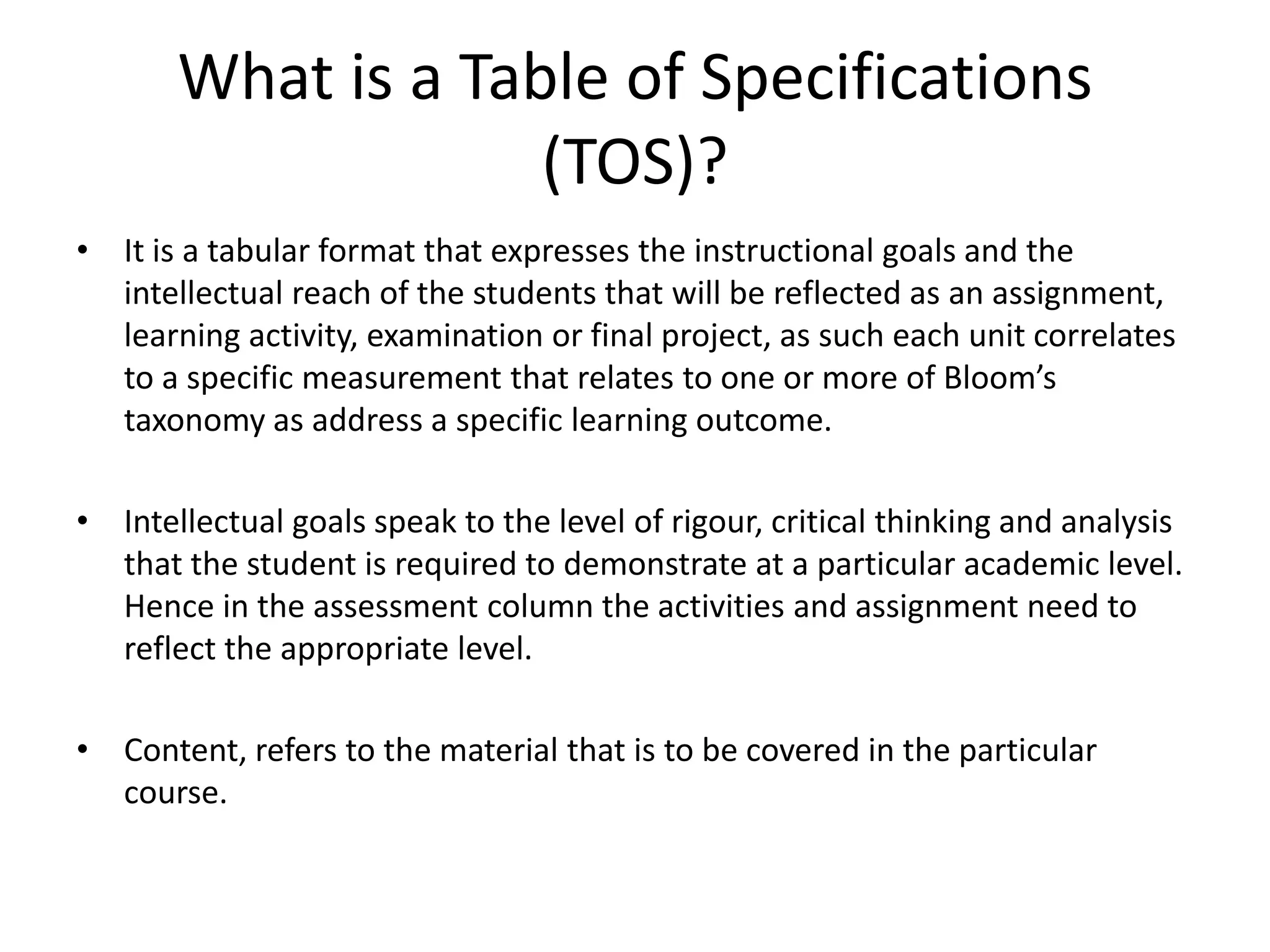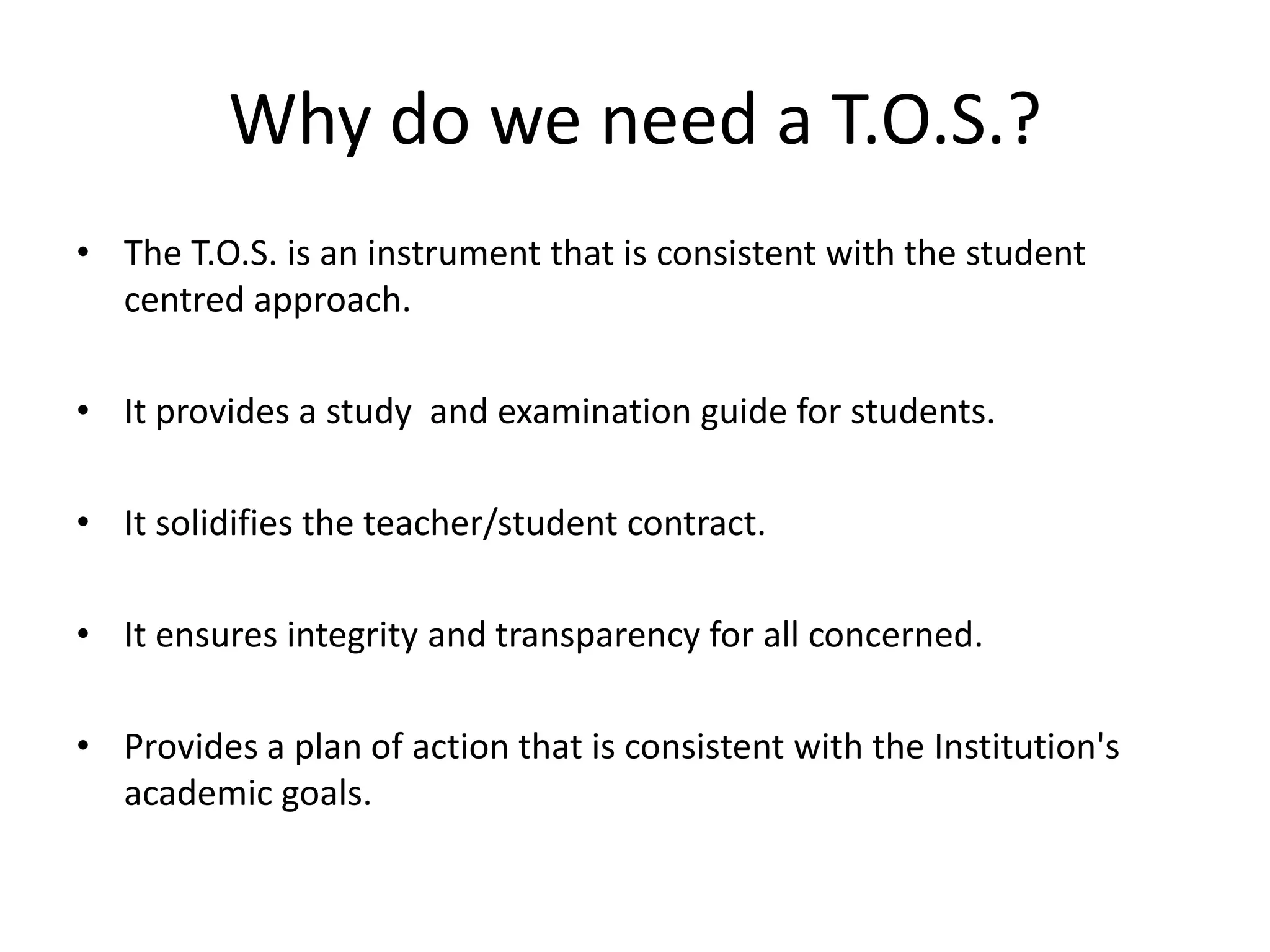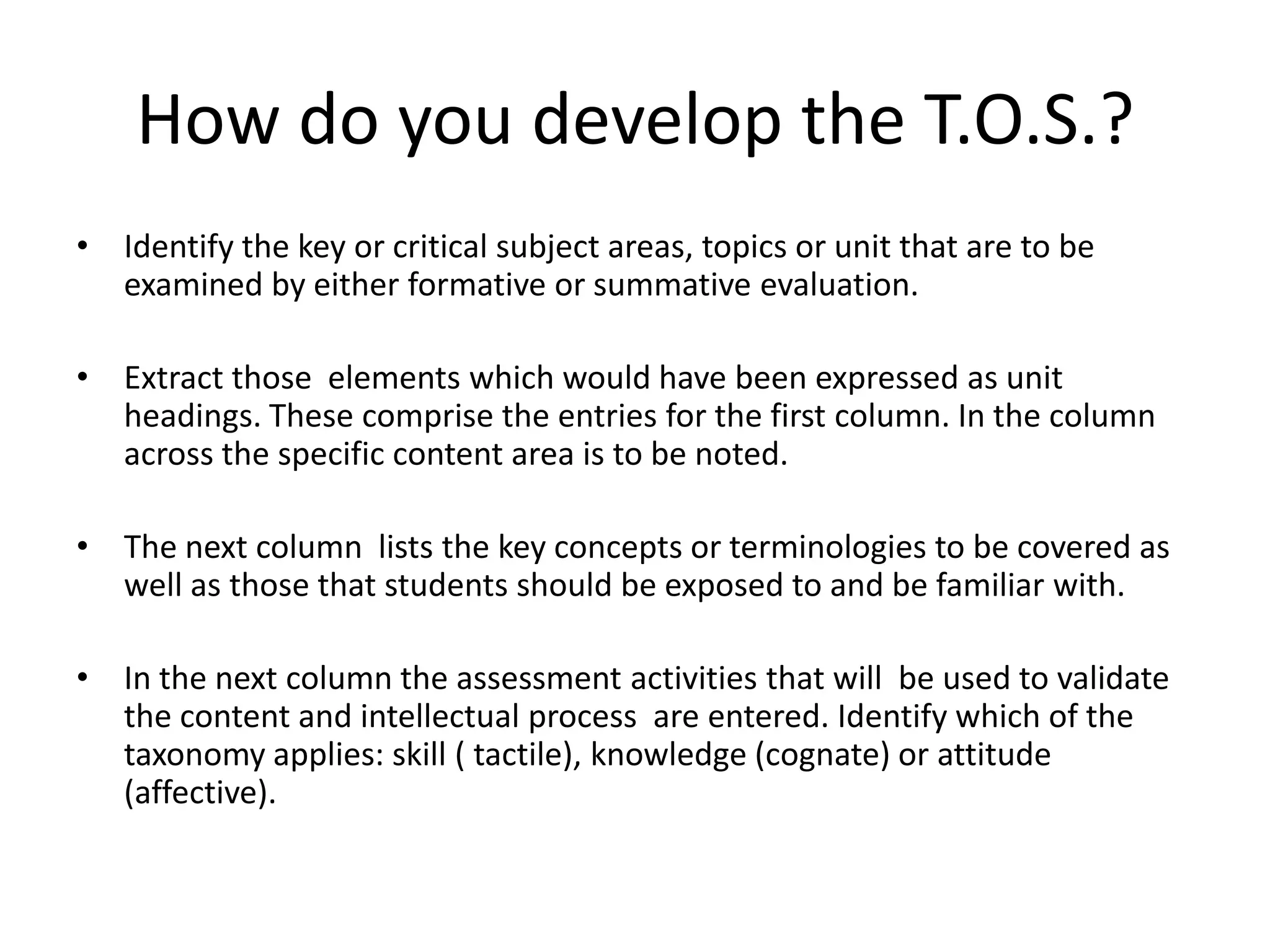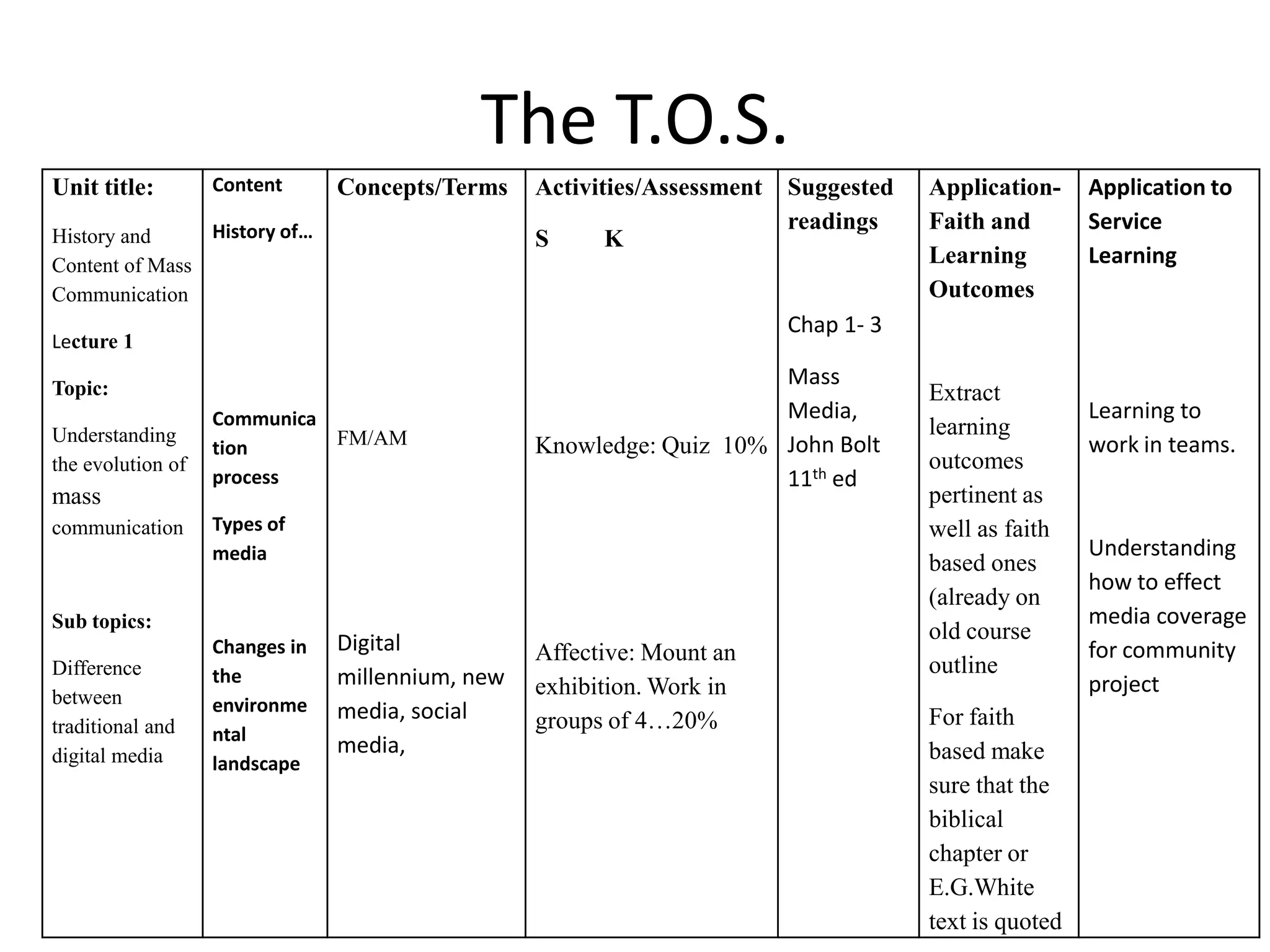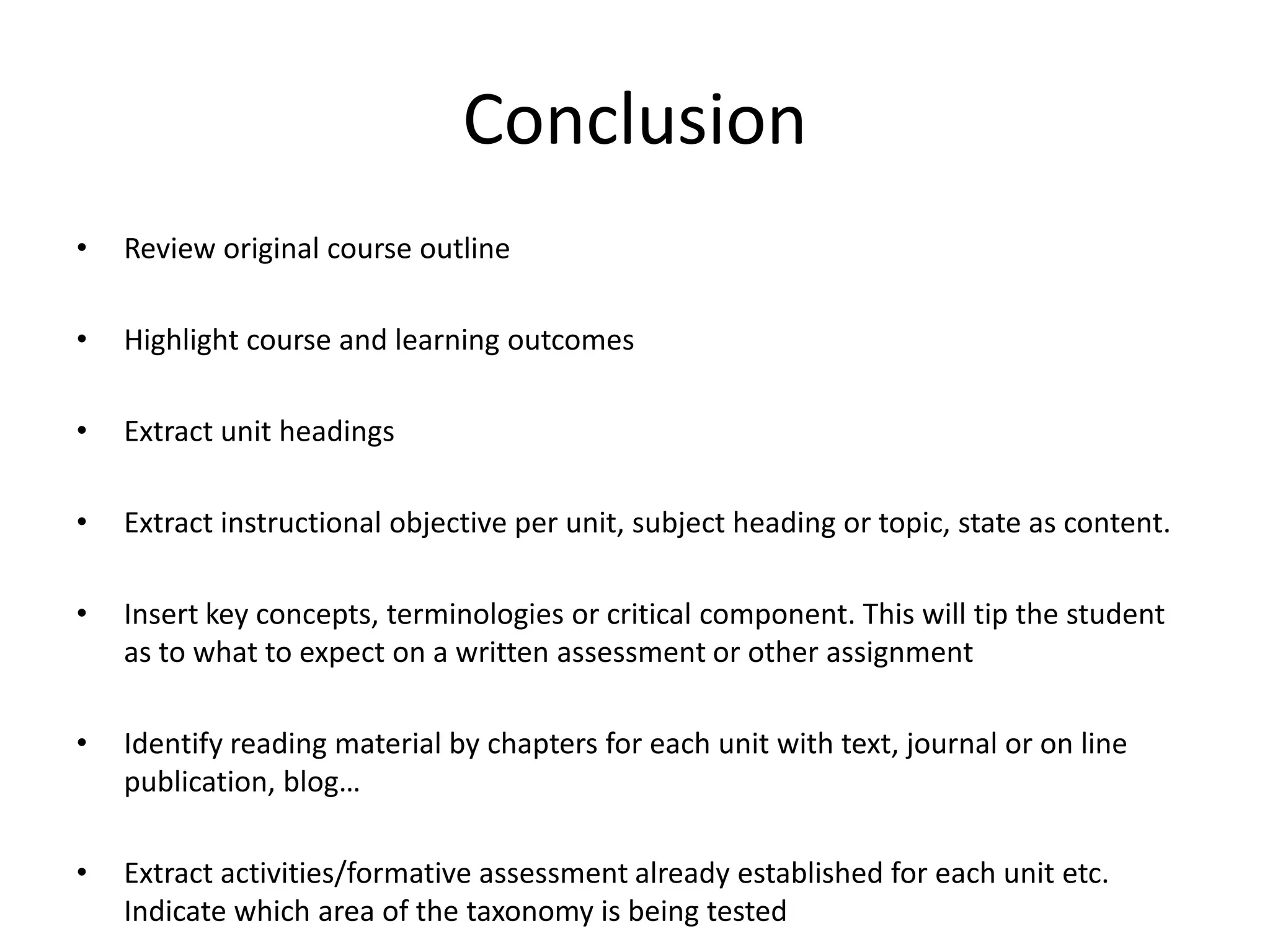The document discusses a Table of Specifications (TOS), which is a tabular format used to map instructional goals and learning outcomes to assessments and activities. A TOS correlates each course unit to specific Bloom's taxonomy levels and learning outcomes. It is developed by identifying key topics, extracting concepts and terms, listing suggested readings, and noting formative assessments. The TOS provides transparency by communicating the expected intellectual rigor and content to students. It ensures assessments are aligned with course goals and outcomes.
